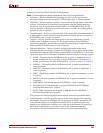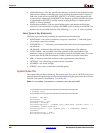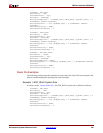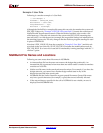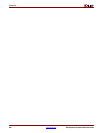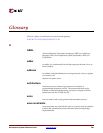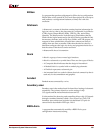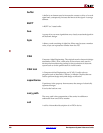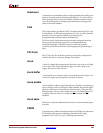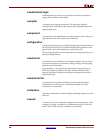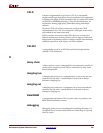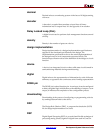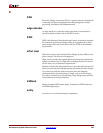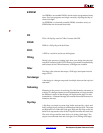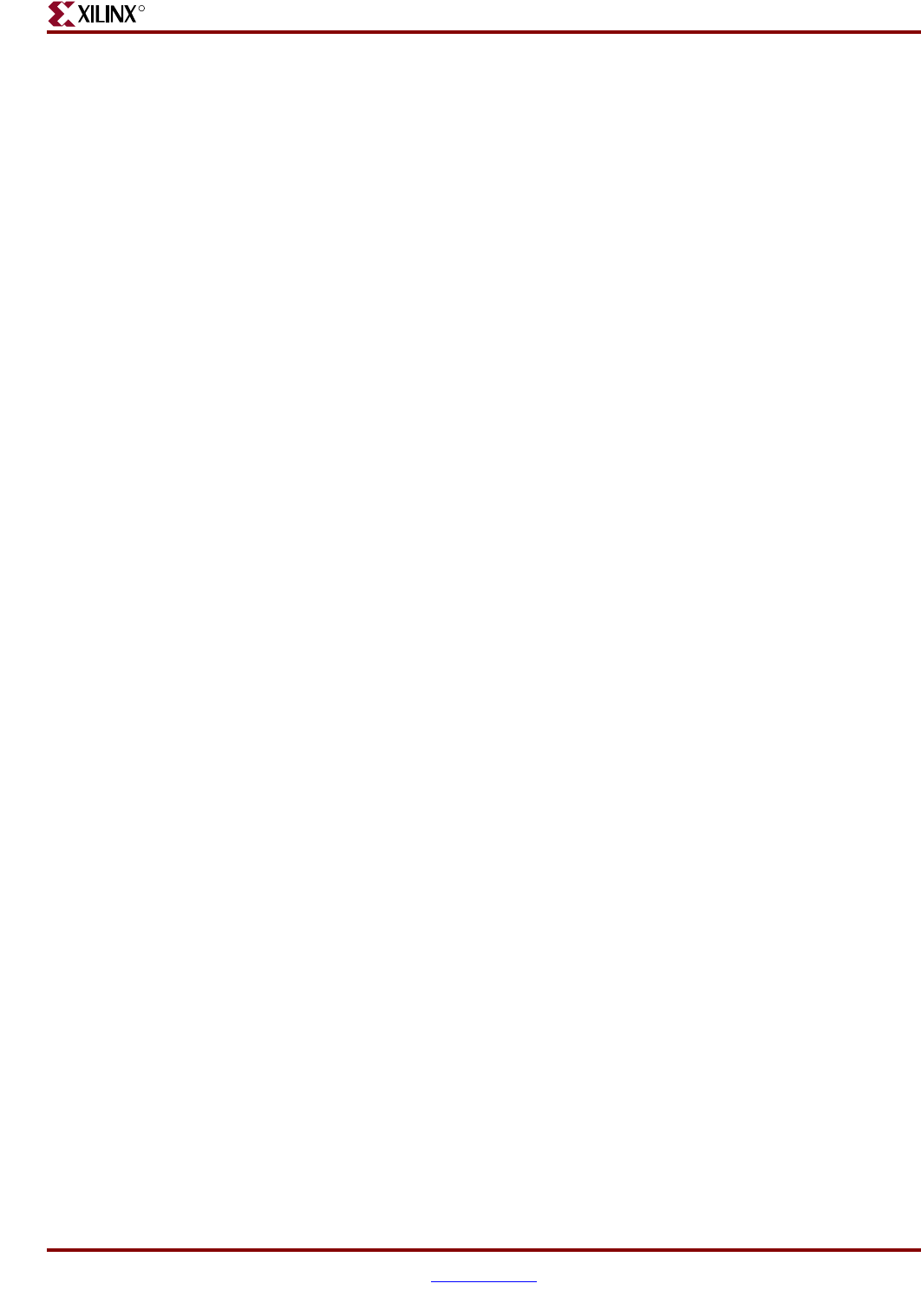
Development System Reference Guide www.xilinx.com 397
R
BitGen
Is a program that produces a bitstream for Xilinx device configuration.
BitGen takes a fully routed NCD (Circuit Description) file as its input
and produces a configuration bitstream, a binary file with a.bit
extension.
bitstream
A bitstream is a stream of data that contains location information for
logic on a device, that is, the placement of Configurable Logic Blocks
(CLBs), Input/Output Blocks (IOBs), (TBUFs), pins, and routing
elements. The bitstream also includes empty placeholders that are
filled with the logical states sent by the device during a readback. Only
the memory elements, such as flip-flops, RAMs, and CLB outputs, are
mapped to these placeholders, because their contents are likely to
change from one state to another. When downloaded to a device, a
bitstream configures the logic of a device and programs the device so
that the states of that device can be read back.
A bitstream file has a .bit extension.
block
A block is a group of one or more logic functions.
A block is a schematic or symbol sheet. There are four types of blocks.
-- A Composite block indicates that the design is hierarchical.
-- A Module block is a symbol with no underlying schematic.
-- A Pin block represents a schematic pin.
-- An Annotate block is a symbol without electrical connectivity that is
used only for documentation and graphics.
bonded
Bonded means connected by a wire.
boundary scan
Boundary scan is the method used for board-level testing of electronic
assemblies. The primary objectives are the testing of chip
I/O signals and the interconnections between ICs.
It is the method for observing and controlling all new chip I/O signals
through a standard interface called a Test Access Port (TAP). The
boundary scan architecture includes four dedicated I/O pins for
control and is described in IEEE spec 1149.1.
BSDLAnno
A program that automatically modifies a BSDL file for post-
configuration interconnect testing.



